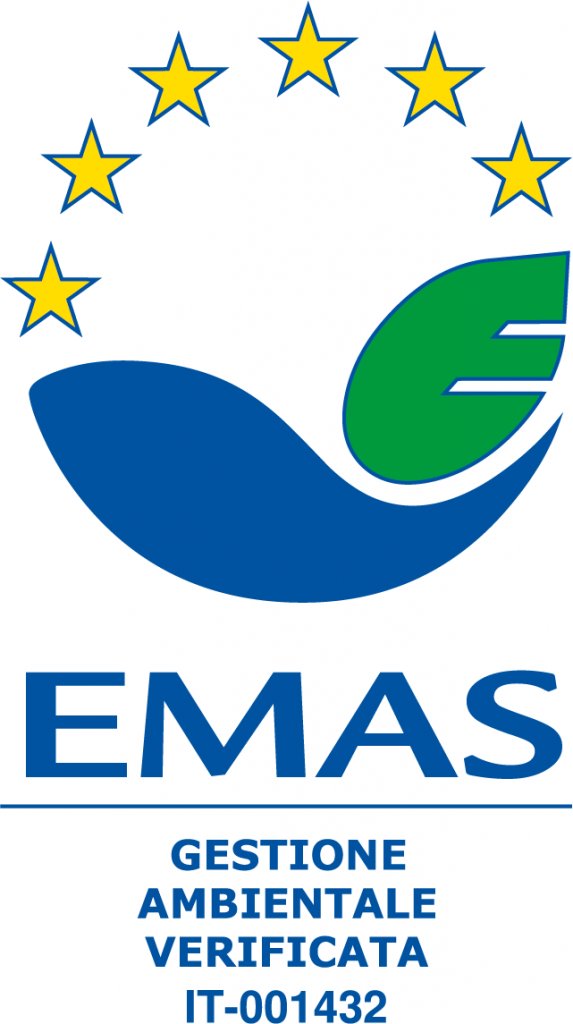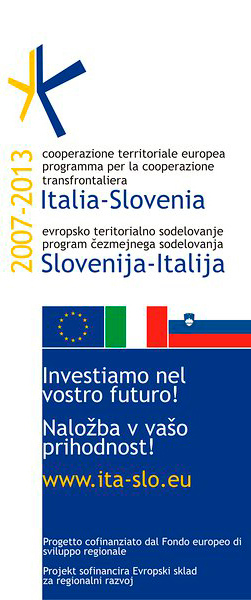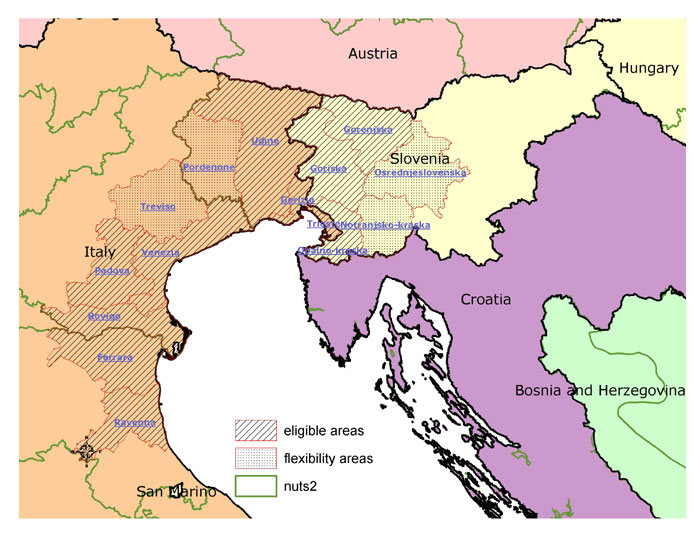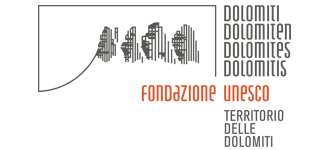CLIMAPARKS
Home | Park institution | Projects | Climaparks
Climaparks
Climaparks “Climate changes and management of protected areas”

Climate changes have no political boundaries, but they have a global impact. In cross-border areas there are often linked ecosystems and a rich subordinate biodiversity due mostly to the climatic conditions.
On a global scale this territory is one of the areas most at risk and this is of strategic importance for the monitoring of climate changes on biotic diversity, and indirectly on the economy, on tourism, agriculture, fisheries and the social component of the area.
Climaparks “Climate changes and management of protected areas is the name of the cross-border cooperation project Italy – Slovenia, financed by the European Regional Development Fund and by national funds. This project, launched in May 2010, will end in October 2013. It is carried out by the Friulian Dolomites Park along with eight other partners, Italian and Slovenian:
- Triglavski narodni park (Lead Partner)
- Krajinski park Strunjan
- Park Škocjanske jame
- Soline, pridelava soli d.o.o.
- Natural Park of the Julian Pre-Alps
- Regional Natural Park of the Friulian Dolomites
- Po Delta Veneto Regional Park
- Consortium of the Regional Park of the Po Delta Emilia Romagna
- Province of Ravenna
In the Slovenian-Italian cooperation are represented the Slovenian coast region (north part of the Adriatic Sea), the Karst and the mountain region (Alpine).


The project was born with the aim of studying the phenomenon of climate changes and to find out what possible effects they will have on the territory.
As part of the project will be adopted a unified system for monitoring and analyzing the impact of climate change on biodiversity for three different areas of the region: the mountain and the sea environments and the Karst area. The unified system ensures the comparability of the data collected at regional level. Just the diversity of these areas could be a regional and global indicator of the impact of climate change on biodiversity and consequently on the lives of the inhabitants also in the economic sense (fishing, agriculture and tourism). Similarly, we want to create some examples of good practice in the management of parks to reduce the negative environmental impact: use of renewable energy sources, use of recyclable materials and environmental friendly methods in the design of parks. The points mentioned above will be promoted as part of the info centers network, connected with the info points on climate change, with special programs, educational workshops, exhibitions and more.
The project activities include the following major operational sections:
- collect, analyze and compare data on the impact of climate change on the biodiversity of protected areas;
- analyze the flow of visitors and adapt the management of the park
- develop pilot projects to create examples of good practice
Basically the operational sections are divided into work packages:
WP 1 – COORDINATION AND MANAGEMENT
WORKPACKAGE 2 – MONITORING AND ASSESSING THE IMPACT OF CLIMATE CHANGE ON BIODIVERSITY
HARMONISED METHODOLOGY OF MONITORING
The park has entrusted the study to the Museum of Natural History of Udine that wrote the document:
MONITORAGGIO DI HABITAT E SPECIE FLORISTICHE DEL PARCO NATURALE DOLOMITI FRIULANE
Ciadin del Mela – Val Settimana – Claut (PN)
The monitoring of habitats and floral species of the Friulian Dolomites Natural Park service has been entrusted to the Forestry Studio of Dr. Cassol and Scariot who are currently monitoring the territory of the park.
EFFECTS OF CLIMATE CHANGE ON NATURE
Based on data collected during the monitoring carried out, the study of the possible effects that climate change will have on habitats and some species of flora will be entrusted.
The final study on the effect of climate change on habitats of the Friulian Dolomites Park has been completed by a Giuseppe Oriolo, technical naturalist.
Final report by techn. naturalist G. Oriolo
WP 3 – SUSTAINABLE MANAGEMENT: THE PARKS AS AN EXAMPLE OF GOOD PRACTICE
Within this WP the Park has three different activities:
STUDY TRIP
The Park has participated in visits in two parks within the EU that are considered exemplary with regard to the implementation of solutions to respond and adapt to climate change, which can serve as a model for energy efficiency, for the use of sustainable materials and eco-friendly transportation methods.
IMPLEMENTATION OF AN ENERGY PLAN
Tool with which to outline objectives, strategies, actions and resources needed to implement measures to contain the emissions of greenhouse gases, to reduce energy consumption of the Park and exploitation of renewable energy sources.
Document – Implementation of an energy plan
CONSTRUCTION OF THE VISITORS CENTER OF CLAUT
Thanks to the Climaparks project funds, will be made of operations to complete the existing structure using natural and ecological materials, with high insulating power, such as the insulation of the walls and floors, exterior doors and the installation of a solar panel system for the production of electrical energy, with a capacity of about 12 kW.
WORKPACKAGE 4 – SUSTAINABLE DESIGN: THE NETWORK OF INFORMATION CENTERS
MONITORING THE FLOW OF VISITORS AND POSITIONING OF COUNTING SYSTEMS
Counting the number of visitors is important for two reasons:
- Adaptation of the park management depending on the visitors number (eg. Increased inflow in areas with flora and fauna at risk)
- The monitoring of trends over long periods provide an idea on the visitors’ movements within individual parks at regional level (eg. In which part of the region visits are increasing and where they are decreasing)
To achieve this, the park has entrusted to STAF, company from Barcis the visitors’ counting service in areas and periods of greatest inflow of visitors and simultaneously placed two automatic counters in two areas particularly popular, to monitor the flow of the whole year visitors.
PURCHASE OF A WEATHER STATION
It is included in the Climaparks project that the individual partners are provided with at least one meteorological station for the collection of data on the climatic conditions. The data will be saved and they are going to build a database on the climatic conditions in individual parks. The Friulian Dolomites Park already had an active weather station positioned above the Visitors Center in Cimolais, but wanted to increase this information network by installing another station in Poffabbro. All data from the two weather stations are available daily in the Park website.
ACTIVITIES WITH SCHOOLS
Included in the project Climaparks the Park Institution together with the project partners, wants to carry out awareness-raising activities also on climate changes, on the conservation of biodiversity and an environmentally sustainable relationship in the protected areas.
In this context, the Institution has decided to involve the Primary and Secondary Schools of First Instance of the protected area municipalities with the aim of carrying out a program of activities designed to spread and raise awareness to local schools through the Climaparks the project and also to learn to students and teachers a correct approach for an environmentally sustainable live.
Schools’ involvement was good, and in November, thanks to the Naturalistic Park Guides the first activities have already started.
The main purpose of the teaching will be to raise awareness among students of local schools about the phenomenon of climate change, encouraging them to adopt more sustainable behaviors and lifestyles, through the knowledge of the territory. Practically, the Guides will work directly in the classes to prepare children through experiments and games and then they will accompany them on an excursion on our territory to make them “see at firsthand” the fragility of biodiversity and the effects that climate changes are having on the flora and local wildlife.
All activities will take place during the school year 2012/2013 and the participation of schools is free, thanks to the funds of the Cross-Border Cooperation Italy-Slovenia 2007-2013 program.
Presentation of Climaparks Schools

